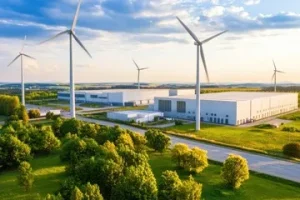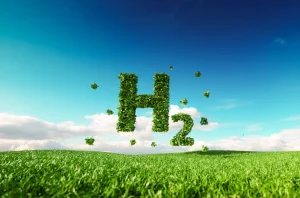Top Hydrogen Production Technologies Transforming the Energy Landscape in 2025
Hydrogen is only as clean as the method used to produce it. That’s why hydrogen production technologies—the processes that extract hydrogen from water, fossil fuels, or biomass—are under the spotlight in today’s energy revolution. From carbon-heavy to carbon-free, these methods are shaping the future of sustainable power.
Hydrogen-lightweight, powerful, and versatile is rapidly becoming the star player in the global energy transition. But here’s the million-dollar question: How are we actually producing it?
In this blog, we will break down the most impactful hydrogen production technologies, from conventional methods like steam methane reforming (SMR) and coal gasification to futuristic breakthroughs like solar water splitting. Expect facts, figures, and a bold look into what’s next.

Wait—Why Is Hydrogen Suddenly Everywhere?
Good question.
The world is undergoing an aggressive energy shift, and hydrogen plays a starring role in this script. It’s clean, versatile, storable, and can be used in sectors where electrification alone falls short—think aviation, steelmaking, and long-haul trucking.
According to the International Energy Agency, global hydrogen demand could reach 530 million tonnes by 2050, up from about 95 million tonnes in 2021. That’s not just growth—it’s an energy revolution.
And the tech making this possible? That’s where things get interesting.
1. Steam Methane Reforming (SMR): The Old King of Hydrogen Production
Let’s start with the OG: Steam Methane Reforming.
This method produces hydrogen by reacting natural gas (mostly methane) with steam. It currently accounts for nearly 50% of global hydrogen production.
Pros:
- High hydrogen yield
- Established infrastructure
- Cost-effective
Cons:
- Heavy carbon emissions
- Relies on fossil fuels
- Not sustainable long term
Despite its dominance, SMR is facing pressure. The world is slowly shifting from fossil fuels toward renewable sources, and SMR must adapt or fade.
2. Coal Gasification: Still Relevant, But For How Long?
Coal gasification is another thermal process used to break down coal into hydrogen, carbon monoxide, and CO₂. It’s still widely used in coal-rich countries like China.
But it’s not without baggage. Producing hydrogen this way emits more CO₂ than SMR. Unless carbon capture is added, it’s a tough sell in a climate-conscious world.
Bottom line: It’s part of our history—but maybe not our future.
3. Thermal Processes: Efficiency Meets Heat
Thermal processes are all about using extreme heat (often over 1000°C) to split water molecules or decompose hydrocarbons. They include:
- Pyrolysis (cracking methane into hydrogen and solid carbon)
- Thermochemical cycles (like the sulfur-iodine cycle)
These processes are in the early stages of hydrogen economy development, but they show promise—especially when paired with nuclear or solar heat sources.
4. Solar Water Splitting: Turning Sunlight into Fuel
Yes, you read that right: we can turn sunlight and water into hydrogen and oxygen directly.
Using photoelectrochemical cells, this cutting-edge technology mimics photosynthesis to produce hydrogen with zero emissions. It’s the holy grail of clean hydrogen production.
A study in Energy Fuels 2021, 35 found solar water splitting has a theoretical efficiency of up to 30%, but current systems average around 10–15%. We’re not quite there—but imagine the payoff.
5. Biomass Conversion: Making Hydrogen from Waste
Another star in the making: biomass conversion.
By using thermochemical or biological methods, we can extract hydrogen from organic waste like agricultural residue, food scraps, and sewage sludge.
This method is particularly exciting for regions with high biomass availability. It closes the loop on waste and adds value to existing systems.
Why it matters: Biomass hydrogen supports long-term production of hydrogen, especially for rural areas lacking robust infrastructure.
6. Electrolysis: Clean, Scalable, and Ready to Shine
Electrolysis is the golden child of clean hydrogen. It uses electricity to split water into hydrogen and oxygen—simple in theory, powerful in practice.
When powered by renewable energy like wind or solar, it produces what we call green hydrogen.
There are 3 main types of electrolysis:
- Alkaline Electrolysers – the most mature and widely used
- PEM (Proton Exchange Membrane) – faster, more compact, and ideal for fluctuating renewables
- SOEC (Solid Oxide Electrolysis Cells) – high-efficiency and still experimental
Electrolysis is key to scaling the hydrogen economy, but the current challenge is cost. As technology advances and renewable energy becomes cheaper, expect a dramatic price drop.
If you’re serious about tapping into the hydrogen opportunity, you need more than just ideas—you need a strategic partner. That’s where YonderH2 comes in.
YonderH2 is at the forefront of innovation in hydrogen production, integrating smart tech, green energy, and scalable infrastructure. Whether you’re a policymaker, investor, or business leader, YonderH2 helps you navigate the complex world of hydrogen with clarity and confidence.
- End-to-end hydrogen solutions
- Focus on renewables + electrolysis
- Backed by deep tech and global partnerships
- Driving real impact—not just hype
They’re not just building plants. They’re building the future.
Ready to Lead the Charge?
Hydrogen is no longer just “the fuel of the future.” It’s the engine of today’s energy transformation. Whether you’re in industrial manufacturing, mobility, or infrastructure, your window to act is now.
Let YonderH2 help you get ahead—before the world catches up.
Get in touch with the YonderH2 team today and explore how hydrogen can power your growth.
Let’s fuel a cleaner, bolder, more sustainable future—together.
Hydrogen production technologies shape the future of the globe toward cleaner energy and leave no stone unturned in doing so. Hydrogen is the messiah in creating a green planet and has emerged as a promising option for fuelling cars and primary industries. It is in high demand in the search for alternatives to fossil fuels every day and in every way. In 2025 and beyond, we will see significant breakthroughs in hydrogen production that will make it cleaner, cheaper, and scalable than ever imaginable.

Let’s investigate the leading hydrogen production technologies changing the energy landscape this year.
- Green Hydrogen via Electrolysis
One of the most talked-about technologies in 2025 is the production of green hydrogen through electrolysis, which uses electricity, ideally from renewable energy sources like solar or wind power, to split water (H₂O) into hydrogen and oxygen.
Green hydrogen is rated the cleanest because it emits no carbon emissions. In response to the declining costs of renewable energy, electrolysis is getting cheaper, and green hydrogen is finding its way into mainstream energy discussions.
- Blue Hydrogen with Carbon Capture
One effective process of hydrogen production is blue hydrogen. Blue hydrogen is created by separating hydrogen from natural gas through steam methane reforming (SMR). While the process emits carbon dioxide, advanced carbon capture technologies guarantee that the carbon is entrapped and stored underground.
Blue hydrogen is a transition technology that will permit us to resume utilizing current facilities and dramatically cut carbon emissions.
- Biomass gasification
Biomass gasification is a profitable technology for recycling organic matter like wood chips, farm wastes, or food wastes into hydrogen. This process not only builds hydrogen but also uses organic wastes restoratively.
As countries turn to cleaner fuel and enhanced landfill disposal, biomass gasification is stepping forward with its double benefit.
- Methane Pyro
One of the most promising methods of hydrogen production that will be established in 2025 is methane pyrolysis. In contrast to the traditional approach, wherein carbon dioxide is created by separating hydrogen and solid carbon from methane, here carbon is separated from hydrogen and solid carbon is yielded without the release of carbon dioxide.
The process is energy-efficient and low-emitting, with promising chances of being scaled up to industrial use.
- Photoelectrochemical Water Split
Under development and with much potential is photoelectrochemical (PEC) water-splitting technology that splits water into hydrogen and oxygen with sunlight. Solar panels and electrolysis are combined in a single device with reduced equipment and energy costs. This advanced approach can potentially revolutionize commercial green hydrogen production and become even more environmentally friendly.
Final Thoughts
By 2025, the hydrogen production technologies will be more than ideas on paper—it will be real solutions to drive the shift to cleaner energy. From blue and green hydrogen to more evolved methods like pyrolysis and PEC, the industry is growing staggeringly! As more is invested in hydrogen infrastructure and policy is strengthened, the technology will become cheaper and more accessible. Governments and businesses are drawn to hydrogen as a significant pillar of the energy transition, and these breakthroughs facilitate it. One of India’s leading green hydrogen company in India, Yonder, plays an essential role in the global green economy.
Contact now!
About the Author: Yonder, a division of the Ador Group, has been a leader in Power Electronics since 1908. Specializing in advanced Power Conversion Units for hydrogen generation, we integrate Alkaline, PEM, SOEC, and AEM electrolysers to ensure high efficiency and minimal power consumption. Headquartered in Mumbai with state-of-the-art facilities in Pune, Yonder is committed to global decarbonization. Our 500-MW manufacturing facility for hydrogen power sources is poised to deliver cutting-edge solutions that thrive in unique and demanding deployment contexts.





